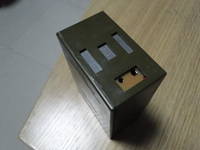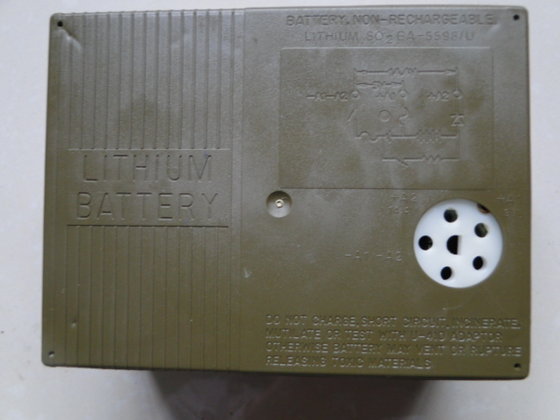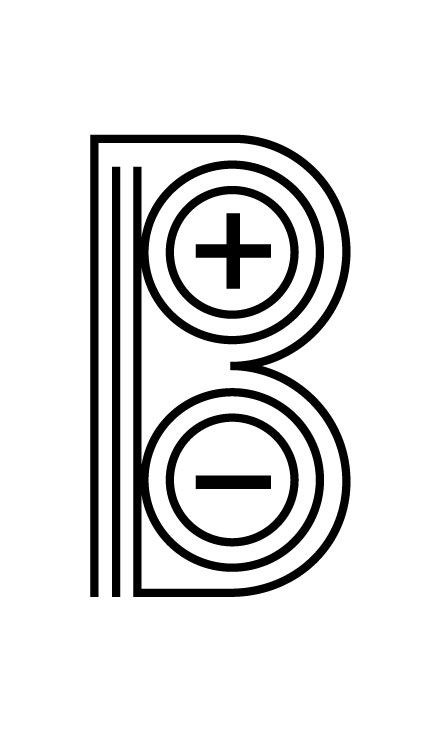

 |
 |
|
#1
|
|||
|
|||
|
I've been having a bit of give and take with one of the players regarding his thermal sight. I know those things are pretty small now, but I always have the image of this guy in my head from the old US Vehicle guide.
Is that thing a thermal sight? And what should I be looking at as a period piece of technology. By which I mean, a 2000 era item envisioned in 1980 something. Thanks, Chris
__________________
Blogging the current FtF I'm running at http://twilight-later-days.blogspot.com/ Everything turns into Cthulhu at the end. |
|
#2
|
||||
|
||||
|
Well frist off I don't think that is a thermal sight, it looks like AN/TVS-5 Night Vision Sight which is a night vision sight for heavy weapons like the 50 Cal
For Thermal sights in the TW2000 era your the US has AN/PAS-13 which I think would be in service in the war, IRL the sight came on line in 1998, I don't it too much of stretch to production and feilding moved up.
__________________
I will not hide. I will not be deterred nor will I be intimidated from my performing my duty, I am a Canadian Soldier. |
|
#3
|
||||
|
||||
|
Starlight scopes were in use during the Vietnam war; the M3 Sniper System was a backpack-carried power-source and processing source (in the sense that it did all the heavy lifting, not in that it provided any kind of computerized synthetic vision) for an IR scope fitted to the M1 Carbine. It was a bulky system but the rifle's effective range was about the same as the scope's night-vision capabilities so it was actually fairly decent.
I could foresee a county SWAT team out in the sticks finding them very useful post-apocalypse. http://www.imfdb.org/wiki/Talk:M1_Carbine |
|
#4
|
||||
|
||||
|
Chris, sorry this is a long read but here is some info on 1990s imagers and a few webpages regarding the development of night vision systems (including thermal imagers). Your player should probably read those webpages too. The following is info from various books and websites but also my own personal experience with thermal imagers in the early 1990s with the Australian Army.
Thermal imagers of the 1980s and 1990s were big bulky things commonly found only mounted in vehicles or on tripods. They required coolant gases to increase their heat sensitivity which meant they required several seconds of "cool down" time before they could be used. Thermal Weapons Sights for small arms were in the early stages of development and production and were scarce in military service (they were incredibly expensive, somewhat fragile and there just weren't that many made at the time to allow widespread distribution) It was not until the mid-late 1990s that the FPA (Focal Plane Array) allowed thermal imagers to get small enough for widespread use and the technology was actually pushed forward by commercial applications (police, fire, rescue and security) rather than military. For the Twilight War, those commercial demands are highly unlikely to exist so the research that lead to the FPA would be in its infancy at best. Someone mentioned the AN/PAS-13, it's a hell of lot handier than earlier generations of thermal imager but unfortunately it didn't come into service until the late 1990s (I think it was 1997 or 1998). My ruling would be that if your player has a thermal imager for a weapon sight and you have the Twilight War starting before the late-1990s, then it's probably a Hughes Thermal Weapon Sight (TWS) or a Magnavox Short-Range Thermal Sight (SRTS) - either way, it's big, it's bulky, it makes a high pitched whining noise like a mosquito when it's operating, it's only able to display in green, white and black, it uses unique batteries and it's heavy, like several kilograms heavy. And the player should consider it to be rarer than rare and should feel blessed that they have such a high-tech piece of gear! http://www.nvl.army.mil/history.html This is a US government run site and they have a strict "if you use this site expect us to check you" kind of warning at the start. http://www.strategypage.com/dls/arti...-3-18-2011.asp http://www.thermal-eye.com/about_us/index_history.htm This page has a short history of thermal imaging development. Note that L-3 Infrared Products was formerly Raytheon Commercial Infrared so they're a defence industry company. http://www.globalsecurity.org/milita...-22-9/apph.htm This page is from one of the US Army manuals and it deals with night fighting - long but worth a read for the different aspects of aided and unaided night viewing. Some basic specs for the two thermal sights I mentioned: Hughes TWS - Light Weapon Thermal Sight (for rifles & carbines) Weight: 1.7kg Effective Range; 550m Battery Life: approx 10 hours* Hughes TWS - Medium Weapon Thermal Sight (for GPMGs) Weight: 1.9kg Effective Range; 1100m Battery Life: approx 8-10 hours* Hughes TWS - Heavy Weapon Thermal Sight (for HMGs, Mk19 AGL, sniper rifles) Weight: 2.1kg Effective Range; 2200m Battery Life: approx 8 hours* Magnavox SRTS Weight: 1.8kg Effective Range; 550-600m* Battery Life: 10 hours * = estimated (I haven't got any solid data, just some estimated figures from a 1993 source) |
|
#5
|
||||
|
||||
|
How do you recharge a thermal site in T2K? Questions in two parts;
1. what sort of connection is it? 3 pin 240 volt? USB? Proprietry type cable? 2. What power source could you use? Diesel generator? Battery pack?
__________________
"Beep me if the apocolypse comes" - Buffy Sommers |
|
#6
|
||||
|
||||
|
Quote:
I guess the designers figured the game was tough enough without having to scrounge for batteries ALL the time so they decided that everything was rechargeable. As for the thermal imagers, many of them used disposable lithium cells set up in series and packaged inside a case such as the BA 5847 U battery pack shown below (note that the connector from the thermal imager is a two pin plug that plugs into the battery and that this battery weighs 0.38kg).   Some older batteries used a 6-pin connector (one is actually just a locating pin and these packs are referred to as using a 5-hole connector) such as that found on the BA 5598 battery shown below.  And the same type of connector is used on the BA 4386 U battery pack - those of us who've lugged a Prick 25 or 77 know these ones!  There is some hope for Twilight PCs however as some thermal weapon sights also had a standard military power connection to hook up the device to an external 6-24V DC power source. Plus many of the Western military lithium battery types have 6 to 10 year shelf life. Later developments made some of these batteries rechargeable, there's a rechargeable version of the BA 4386 U battery pack, but I don't know if these would be available in time for the Twilight War. |
|
#7
|
|||
|
|||
|
Thanks a lot for the information, it'll be very useful. Where did you find the battery pictures?
|
|
#8
|
||||
|
||||
|
Additionally, just because a battery is too flat to use in it's intended device, doesn't mean it's totally useless. For example, the BA 4386 U battery pack (even when basically flat) can be used to charge up PAL (Patrol Ambush Lights) - takes about a day from memory to charge them up to their ten minute usage, but do they ever shed some bright light during that time!
__________________
If it moves, shoot it, if not push it, if it still doesn't move, use explosives. Nothing happens in isolation - it's called "the butterfly effect" Mors ante pudorem |
|
#9
|
||||
|
||||
|
Quote:
|
|
#10
|
||||
|
||||
|
dont know what help it will give you - the Norwegian forces had thermal sight son their Leopard 1a5 tanks from the early 90s. Dont remember the make.
We did get to see one "dismounted" - on a tripod with a battery pack the size of a suitcase. I had to laugh when I saw that a standard issue foam sleeping mat actually hid the trooper underneath. ( But it did come through as a square shape in the sights though..) |
|
#11
|
||||
|
||||
|
Quote:
That answers a question I'd had about a Twilight Zone episode. Guy on was a Navy lifer who'd served on a sub in the south pacific and had survivor's guilt because he was the only crewman to survive a Japanese attack after he'd accidentally knocked an "IR filter" off of a searchlight prior to the boat submerging. For years I thought "oh well the writers were just throwing out a cool technical term they heard somewhere, only the Germans had IR gear back then..." 'course I dunno if the Navy did but it's at least plausible now 
|
|
#12
|
||||
|
||||
|
Quote:
Alternatively, you could try such terms as military lithium battery and military battery. They return a lot of hits then you have to sort through everything  Quote:
|
|
#13
|
||||
|
||||
|
AFAIK, it didn't show up in the Pacific until June or July, so it got very limited use in WWII. It was used in Korea, but I don't remember it's operatioanl history there.
I think there were three different configurations )at least one mounted the IR scope over the receiver, another under the barrel and one used a vertical fore-grip (this made some sense as the M-3 was selective fire like the M-2) The Gear added weighed as much as the carbine had by itself. |
|
#14
|
||||
|
||||
|
Quote:
Keep in mind this is mid-90s tech. Or you can go with what was experimental tech for the time, issued to sniper teams, LRSU teams, and the various special ops types: A solar panel (from 3x3 to 5x5 and anywhere in between) with connectors to various battery or battery chargers (for small batteries). A 3x3 will supposedly charge a SINCGARS battery in less than an hour. And I imagine they have better stuff now. I'm even considering buying a small solar panel and some holding batteries, since I can't afford to put solar panels and wind turbines on my roof... 
__________________
I'm guided by the beauty of our weapons...First We Take Manhattan, Jennifer Warnes Entirely too much T2K stuff here: www.pmulcahy.com |
|
#15
|
||||
|
||||
|
Quote:
|
|
#16
|
||||
|
||||
|
Infra Red night vision technology had already been discovered before WW2 so the concepts were known, it was just that there was nothing really suitable for military use until late in the war. In fact it was the man who invented television, John Logie Baird, that first conceived of IR vision in the 1920s but he's given little/no credit for his ideas (or for the appropriately 1920s Pulp name he gave it - the Noctovision apparatus).
Most early IR vision systems developed by the Allies focused on night driving for convoys rather than combat which is probably why we hear more about the Germans apparent use and so little about the Allied use. The German were the opposite with their attempts directed towards night combat and their earliest systems were actually fitted to artillery and AT guns. The British developed a night driving system called Tabby that consisted of IR lights on the vehicle and the driving wearing a pair of night vision binoculars - that weighed 4kg. There's a good set of pages here that discussed night fighting and the general history of night vision gear - even the Soviets had a go at producing night vision devices http://www.armasight.com/night-vision-history.html |
|
#17
|
|||
|
|||
|
Thanks for the info. I've been away for more than a week. Got hooked on Minecraft... evil, time consumming, addictive game. The shiney's starting to wear off though.
__________________
Blogging the current FtF I'm running at http://twilight-later-days.blogspot.com/ Everything turns into Cthulhu at the end. |
|
#18
|
||||
|
||||
|
Ah, minecrack, err, minecraft. Been horribly addicted to that since it was in alpha.
__________________
Member of the Bofors fan club! The M1911 of automatic cannon. Proud fan(atic) of the CV90 Series. |
|
#19
|
||||
|
||||
|
Quote:
  Bren-tronics Battery Charger Battery charger designed for lead-acid and nickel-cadmium batteries 100 volts minimum and 250 volts maximum 47 hertz minimum and 420 hertz maximum Each unit powered up to verify working condition Convenient Carrying Case Weight: 12.02 lbs Condition: Used Color: High Impact Plastic Resin / Olive Drab Height: 7" Width: 13.25" Diameter: 10.5" Shipped from: Columbus, Ohio NSN/LSN: 6130014430970 Bren-Tronics Soldier Portable Charger | PP-8498/U          Bren-Tronics Soldier Portable Charger | PP-8498/U Multi-Port Universal Battery Charger Manufactured by Bren-Tronics, Inc MFR Part No: BTC-70801 The Suitcase/Soldier Portable Charger (SPC) is a dual-channel sequential charger that automatically charges up to eight batteries (two at a time) in approximately eight hours depending on battery type and state-of-charge, with easy to follow LED lighting sequences. Standard DOD multi-station multifunction charger. Not only compatible with the BT-70581 CSEL Rechargeable Batteries, but with the appropriate adapter, can charge other MIL-SPEC battery types State of the art portable battery charger designed for field or depot use Combines the features of the multi-station and the PP-8444 Incorporates enhanced features to allow faster charging and built in trouble shooting features to better manage battery stocks Charges two batteries at time and auto-sequences to the next available battery to be charged and will automatically revisit the battery to top it off to achieve max performance while the battery is awaiting use Charging system is upgradeable in the field or a desktop environment through the RS232 port and a computer link to charge a countless number of additional battery types and chemistry types including: nickel metal hydride, nickel cadmium, lithium ion, and lithium polymer. Comes with (4) J-6358B/P (BB-2590/U – BB-390B/U) adapters Can hold up to four adapters (one per port) and each adapter holds two batteries Operates from AC or DC power For vehicle supplied DC power, the SPC has a low voltage cutoff to avoid draining the vehicle battery Input: 90 to 260 VAC or 22-28 VDC Frequency (Hz): 47-420 Climatic Conditions: Operating: +14°F to +104°F is recommended. Accepted for short duration: -4°F to +122°F Storage Temperature Range: -40°F to +158°F Requires periodic software upgrades as new adapters become available. For vehicle DC operation the DC cable must be ordered separately Weight: 28.40 lbs Condition: Used Color: Olive Drab Length: 22.8" Height: 9" Width: 14.6" Shipped from: Columbus, Ohio NSN/LSN: 6130014952839 |
|
#20
|
||||
|
||||
|
You know ArmySGT, the kids have all the great gear and gizmos I wish I had when I was in...

__________________
I'm guided by the beauty of our weapons...First We Take Manhattan, Jennifer Warnes Entirely too much T2K stuff here: www.pmulcahy.com |
|
#21
|
||||
|
||||
|
|
|
#22
|
||||
|
||||
|
I agree Paul, they are pretty flashy and just generally cool but when were they introduced to service? Would they have been available in the Twilight: 2000 timeline?
|
|
#23
|
||||
|
||||
|
TM 11-6130-489-13&P. Operator's Unit and Direct Support Maintenance Manual (Including Repair Parts and Special Tools List) For Battery Charger PP-8444/U (NSN 6130-01-427-9604) (EIC: N/A) and Battery Charger PP-8444A/U (6130-01-443-0970) (EIC: N/A). 1 September 1997.
|
|
#24
|
||||
|
||||
|
I found several Battery Chargers and Universal power supplies located here. From the 60s, 70s, 80s, and 90s.
http://www.liberatedmanuals.com/all.mpl No reason at all to believe that many items of equipment could be run from a power supply or if available from recharged batteries. Indeed many batteries are in fact a bundle of C or AA batteries. A character with electronics skills could dissassemble some batteries and replace defective cells given a source of C or AA batteries. |
|
#25
|
||||
|
||||
|
The professor from Gilligan's Island made one of thses using seawater copper strips and a lemon
Would this work?
__________________
I will not hide. I will not be deterred nor will I be intimidated from my performing my duty, I am a Canadian Soldier. |
|
#26
|
||||
|
||||
|
But Brain, where are we going to find a lemon tree in post-apocalyptic Poland?
 - C.
__________________
Clayton A. Oliver • Occasional RPG Freelancer Since 1996 Author of The Pacific Northwest, coauthor of Tara Romaneasca, creator of several other free Twilight: 2000 and Twilight: 2013 resources, and curator of an intermittent gaming blog. It rarely takes more than a page to recognize that you're in the presence of someone who can write, but it only takes a sentence to know you're dealing with someone who can't. - Josh Olson |
|
#27
|
||||
|
||||
 ... and some more coffee stains on wall, screen and keyboard.
__________________
I'm from Germany ... PM me, if I was not correct. I don't want to upset anyone! "IT'S A FREAKIN GAME, PEOPLE!"; Weswood, 5-12-2012 |
|
#28
|
||||
|
||||
|
Quote:
Oh I forgot the coconuts
__________________
I will not hide. I will not be deterred nor will I be intimidated from my performing my duty, I am a Canadian Soldier. |
 |
| Currently Active Users Viewing This Thread: 1 (0 members and 1 guests) | |
|
|